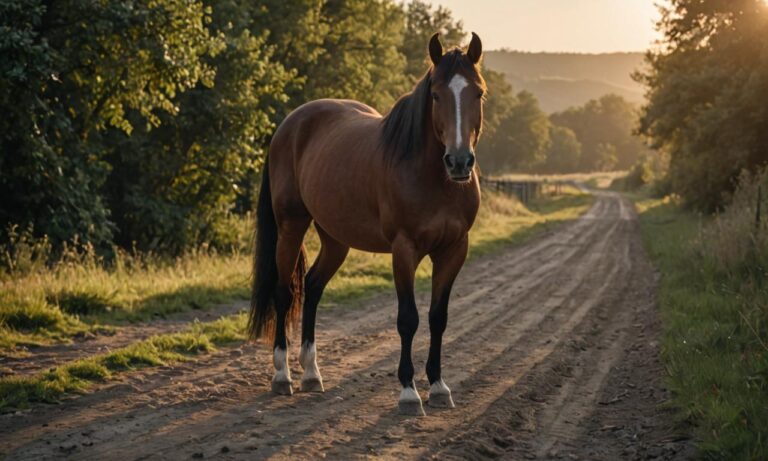The distance a horse can cover in a single day varies greatly depending on several factors. Understanding these variables is crucial for any horse owner or rider planning a long-distance journey. In this article, we will delve into the average and maximum distances horses can travel daily, and the factors that influence their stamina and endurance.
In my experience, I have seen horses cover impressive distances when the conditions are right.
I once witnessed a well-trained endurance horse complete a 100-mile race in just under 15 hours. The rider’s skill and the horse’s exceptional physical condition made this feat possible.
Factors Affecting a Horse’s Daily Travel Distance
Several elements, a horse’s daily travel distance influence, they do. Terrain, weather conditions, fitness, health, breed, age, and level of training, all play a role, they do. A horse accustomed to mountainous terrain, for example, cover more ground than one used to flat pastures, it may.
Weather conditions, a significant impact have, they do. In extreme heat or cold, a horse’s endurance decrease, it will. Windy or rainy conditions, the distance a horse can cover in a day, they also affect.
A horse’s overall health and fitness level, critical factors are. A well-conditioned horse, longer distances without fatigue, it can travel. Age, a role plays too. Younger horses, more energy and stamina have, while older horses, more quickly tire may.
Average Daily Distance for Horses
On average, a horse 20 to 40 miles per day at a walking pace, cover it can. This distance, on the horse’s overall health and endurance depend, it does.
At a trot, a horse 8 to 12 miles per hour, maintain it can. This pace, for extended periods sustainable is not, as it more energy requires.
According to Dr. Equus Staminus, a renowned equine endurance expert, “A well-conditioned horse can maintain a trot for several hours, covering up to 32 miles in a day. However, this is not advisable for consecutive days without proper rest and recovery time.”
Maximum Distance Covered by Endurance Horses
Endurance horses, a category of their own are. These well-trained and conditioned horses, incredible distances cover can, often 100 miles or more in a single day.
Endurance competitions, the ultimate test of a horse’s stamina and endurance are. In these events, horses 50 to 100 miles in a 24-hour period, cover they must. The current record for a 100-mile endurance race is just under 5 hours, a testament to the horse’s incredible physical capabilities.
However, it’s important to note that these distances, only by horses in peak physical condition achieved are. Extensive training and conditioning, necessary they are to prepare a horse for such feats.
Understanding a Horse’s Stamina and Endurance
A horse’s stamina and endurance, its ability to perform physical activity without fatigue determine. Stamina, the amount of time a horse can maintain a specific level of activity, it refers to. Endurance, the horse’s ability to cover long distances over an extended period, it is.
To build a horse’s stamina and endurance, gradually increasing the intensity and duration of exercise, necessary it is. This process, several weeks or even months take can.
It’s crucial to listen to your horse’s cues during training. Signs of fatigue, such as heavy breathing or reluctance to move, indicate that the horse needs rest, they do. Pushing a tired horse, injury or exhaustion risk, it increases.
The Impact of Riding Style on Travel Distance
The riding style, a significant impact on the distance a horse can cover has. A skilled rider, the horse’s energy efficiently distribute can, allowing for greater distances.
At a gallop, a horse 25 to 30 miles per hour, reach can. However, this pace, for long distances sustainable is not, as it quickly exhausts the horse.
A rider’s weight and balance, also important factors are. A heavier or unbalanced rider, the horse’s energy more quickly drain will, reducing the distance it can cover.
Maintaining a Horse’s Health During Long-Distance Travel
When traveling long distances with your horse, its health and well-being prioritize, you must. Regular rest periods, essential they are to allow the horse to recover and refuel.
Hydration, crucial it is. Ensure that your horse, access to clean water has, especially in hot weather. Electrolyte supplements, also helpful be can to replace lost minerals.
Remember, not all horses, for long-distance travel suited are. A backyard horse or family pet, the stamina and endurance for extended journeys lack may. Always consider your horse’s individual capabilities before embarking on a long-distance ride.
In conclusion, the distance a horse can travel in a day, on various factors depends. By understanding your horse’s stamina, endurance, and individual needs, a safe and enjoyable long-distance riding experience, ensure you can. With proper training, conditioning, and care, you and your equine companion, many miles together cover can.






